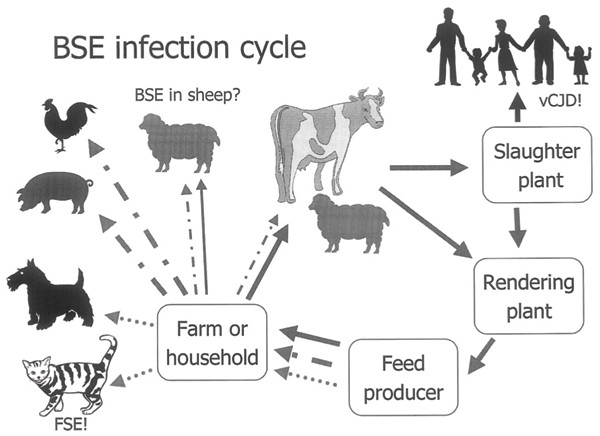Toll like receptor(TLR)
Toll-like
receptors (TLRs)
Toll-like receptors (TLRs) are a class of pattern recognition receptors (PRRs) that initiate the innate
immune response by sensing conserved molecular patterns for early immune
recognition of a pathogen .TLRs are type
I transmembrane proteins that contain three
structural domains: a leucine-rich repeats (LRRs) motif, a transmembrane
domain, and a cytoplasmic Toll/IL-1 receptor (TIR) domain. The LRRs motif
is responsible for pathogen recognition, whereas the TIR domain interacts with
signal transduction adaptors and initiates signaling. Toll-like receptors were first found in Drosophila
melanogaster . 10 TLRs have been identified in human
(TLR1–TLR10) and 13 in mouse (TLR1–TLR13).
Many of the
molecules involved in innate immunity have the property of pattern
recognition, the ability to recognize a given class of molecules. There are
certain types of molecules that are unique to microbes and never found in
multicellular organisms, the ability to immediately recognize and combat
invaders displaying such molecules is a strong feature of innate immunity.
Molecules with pattern recognition ability may be soluble, like lysozyme and
the complement components described above, or they may be cell-associated
receptors. Among the class of receptors designated the toll-like receptors
(TLRs), TLR2 recognizes the
lipopolysaccharide (LPS) found on Gram-negative bacteria.
Systemic
exposure of mammals to relatively small quantities of purified LPS leads to an
acute inflammatory response. The mechanism for this response is via a TLR on
macrophages that recognizes LPS and elicits a variety of molecules in the
inflammatory response upon exposure. When the TLR is exposed to the LPS upon
local invasion by a Gram-negative bacterium, the response result in elimination
of the bacteria. The toll-like receptors (TLRs) are important in recognizing
many microbial patterns and mediate the recognition and generation of defensive
responses to pathogens Typically, signals transduced through the TLRs cause
transcriptional activation and the synthesis and secretion of cytokines, which
promote inflammatory responses that bring macrophages and neutrophils to sites
of inflammation.
Currently, TLR signaling pathways are classified into two
distinct types, namely, the myeloid
differentiation primary response protein 88 (MyD88)-dependent pathways and
the TIR domain-containing
adaptor-inducing IFNβ (TRIF)-dependent pathways.
Myeloid
differentiation primary response protein 88 (MyD88)-dependent pathway
Ø The MyD88-dependent response is utilized by almost all the
TLRs, with the exception of TLR3.
Ø Upon ligand
recognition and TLR dimerization, MyD88
protein binds to the TIR domain of the corresponding TLR through homotypic/heterotypic interactions.
Ø Subsequently, IL-1
receptor-associated kinase 4 (IRAK4) is recruited and leading to the
formation of a Myddosome complex,
and autophosphorylation of IL-1
receptor-associated kinase 1 (IRAK1).
Ø Afterward, the protein
tumor necrosis factor (TNF) receptor-associated factor 6 (TRAF6) is activated,
which in turn activates the
TAK1/TGF-β-activated kinase (TAB) complex through K-63-linked polyubiquitination of TAK1 and TRAF6.
Ø This is followed by
IκB kinase (IKK)-mediated phosphorylation and degradation of I kappa B alpha
(IκBα).
Ø Degradation of this inhibitor finally leads to nuclear translocation of the transcription
factor NF-κB, which induces the transcription of genes encoding inflammatory
cytokines.
TIR
domain-containing adaptor-inducing IFNβ (TRIF)-dependent pathway.
Ø Generally, the
TRIF-dependent pathway is considered to be specific for only few TLRs, such as
TLR3 and TLR4 in mammals.
Ø Transcription factors, including
NF-κB, activating protein-1 (AP-1), and interferon (IFN) regulatory factor
(IRF) family members, can be activated by the TRIF-dependent pathway,
collectively inducing the production of
pro-inflammatory cytokines and/or type I IFN (IFN1).
Ø TLR3 is activated by recognizing
double-stranded RNA (dsRNA), which is followed by the recruitment of TRIF.
Ø TRIF activates TANK-binding
kinase 1 (TBK1) and receptor-interacting
serine/threonine kinase 1 (RIPK1), respectively, which creates a signaling
pathway.
Ø The TRIF/TBK1 signaling complex phosphorylates IRF3, allowing its translocation to the nucleus and
the production of IFN1.
Ø Activation of RIPK1 causes a series of signal transduction events in the same manner as the MyD88-dependent pathway.
Ø TLR4 functions as an
LPS receptor in mammals.
Ø After the recruitment of MyD88 and MyD88-adapter-like (MAL)
adaptors, the TLR4-myeloid
differentiation protein 2 (MD2)-LPS complex activates early-phase NF-κB and
mitogen-activated protein kinase (MAPK).
Ø After the TLR4-MD2–LPS
complex enters the cell via endocytosis, it interacts with
the TRIF and TIR domain-containing
adapter molecule 2 (TICAM2, also known as TRAM) adaptors.
Ø This TRIF-dependent pathway not only induces the production of IFN1 but also activates IRF7 and late-phase NF-κB.
Ø Ultimately, the TLR
signaling leads to the induction or suppression of genes that fine-tune the
inflammatory response.



Comments
Post a Comment